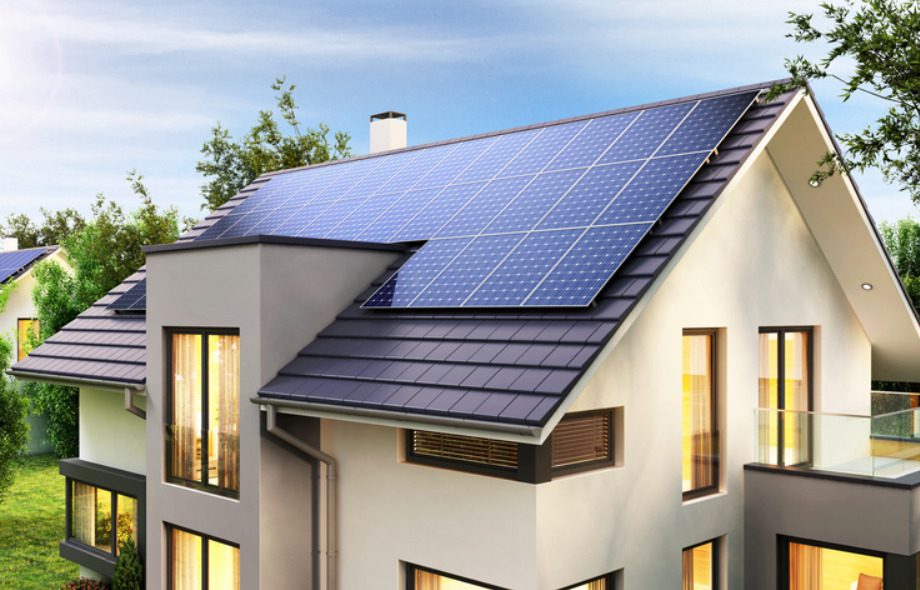How are Solar Panels used for Home?
If you are reading this post, you’re already aware of the fantastic advantages that solar technology can provide. However, how does this technology function? Read on to learn the fundamentals of solar panel operation.
How does solar energy work in your house?
- Solar panels transform solar energy into direct current (DC) electricity.
- Your inverter converts DC power to alternating current.
- Your home is powered by electricity.
- Extra electricity is sent to the utility grid for credit. Or change your battery.
What are the most important features of solar for my home?
The fundamentals of residential solar are pretty easy to understand. All you have to know about setting up a successful system is listed below.
Net Energy Metering
The policy that allows you to send and withdraw energy from the grid through your electrical meter is called Net Energy Metering (NEM). Utility consumers usually draw power from the main grid to use it in their homes, and the meter registers how much electricity they consume.
Solar power allows you to store energy during the day and draw it out at night, allowing you to use it for lights, watching TV, or air conditioning.
You’ll continue to be connected to the grid after you go solar. This is so you may take advantage of NEM to increase the value of your system. The grid is essentially a battery that stores your solar energy until you’re ready to use it. You can utilize the electricity from your system when the grid goes down if you have a battery backup system and a secure power supply.
NEM Credits
If you don’t use all of the energy generated by your solar system, it will roll over to the following day and so on. This occurs daily, month after month, allowing you to utilize all of the energy produced by your solar power system. Thus, if higher usage months happen due to an AC or holidays with guests and activities that require more electricity, you may utilize the excess energy credits you earned in previous months.
Every year, you “true-up” with your utility company to finalize the balance on your energy credit. You’ll have to pay the utility provider for any extra electricity you consume from the grid if you use more than you produce. If you generate more energy than you need, they will reimburse you at a lower rate than retail.
What are the major components of a solar panel system?
The following are the most crucial equipment components in a typical solar panel system for your home.
Panels
Solar modules are made of several smaller solar panels, generally rectangular in size – around 3′ by 5′. Solar panels come in a variety of sizes, output (measured in Watts), efficiency, and even color. Roof-mounted solar panels can be attached to a home or structure’s roof, or they may be installed on a ground-mount racking system. The cells in the panels are made of silicon and generate a flow of direct current electricity when exposed to sunshine.
Inverter
The inverter converts the direct current generated by the solar array(s) into a usable alternating current. There are various types of inverters available for use with solar systems:
- String inverters are the most basic and most developed. A DC is transferred from a group of solar panels connected to it. The inverter converts DC electricity from the battery to AC power that is then distributed to the electrical system in the home.
- Micro-inverters are tiny, modular inverters installed behind each solar panel in an array and effectively divide the AC energy production of each panel so that the reduced output of one panel does not impact the whole system.
Monitoring system
It’s critical to have a monitoring system in place for every residential solar installation. This is the mechanism that will allow you to monitor and analyze your system’s real-time and historical energy output.
Some monitoring devices provide this energy production information in a physical display unit, while others can use an online interface. Solar installers may also provide whole-house energy consumption monitoring as “smart” or connected homes grow in popularity. To ensure that your solar system is operating effectively, it’s critical to connect it with an energy production monitoring system.
Racking system
The system in which your solar panels will be attached to the roof of your house or the ground is known as a racking system. While some racking systems may look different, they all have the same purpose.
It’s vital to make sure your racking system, if roof-mounted, is properly flashed and sealed to keep your roof safe from the elements. Roof racking systems differ depending on the type of roof.
What are the most essential details to consider when starting a solar project?
Now that you know the crucial elements of solar pricing and equipment, it’s time to discuss the essential details for putting together your solar project. Choosing the appropriate installation company is only one of many choices you must make when it comes to solar panels for your home.
Company
Knowing the number of installations, locations, track record, and rankings are critical when choosing a solar installation business.
You’ll also want to think about the length of their workmanship warranty. It covers roofing penetrations, water damage, electrical repairs, and any other installation-related problems.
Contract
Contracts might be intimidating and rife with legalese, making them difficult to understand. The following are some of the most important elements to double-check in the contract:
-
- payments (when you pay and how much)
- any extra line items (service upgrades, EV chargers, buried lines
- escalator rate (for lease)
- detailed warranty information
- cancelation clause
- a system’s first-year production estimate
- hardware specs
Installation Process
A solar PV system is installed in a single day or two. The materials are delivered to your home with a team of workers. Standoffs are then fastened to the roof, followed by flashings. The solar panels are installed, and the rails are connected. The wiring is run through the conduit and connected to the system’s main service panel.
Maintenance
Solar PV systems require very little maintenance. Your panels should be cleaned to remove the dust and grit from them. You may also hose them down every two to three months if necessary. Snow shouldn’t be a big issue in areas that get snowfall; the snow will slide right off, and the panels will still be exposed to sunlight through the flakes.
When it comes to solar systems, the homeowner is responsible for maintenance. If any hardware on your system cannot be fixed remotely, your workmanship warranty will cover any labor required to service or replace it.
If you lease a system or do a PPA, the financiers are likely to provide a “maintenance package” in which they promise to clean it every two years or annually. According to studies, most tilted arrays do not require this. These ‘maintenance kits’ are frequently expensive, so be cautious of them.
Thinking about installing solar panels for your home in Calgary?
The Panel Upgrade Experts provide dependable and trustworthy service to Calgary homeowners who wish to install solar panels on their homes. We provide solar systems installations of the best quality to ensure you have clean energy for years to come.

